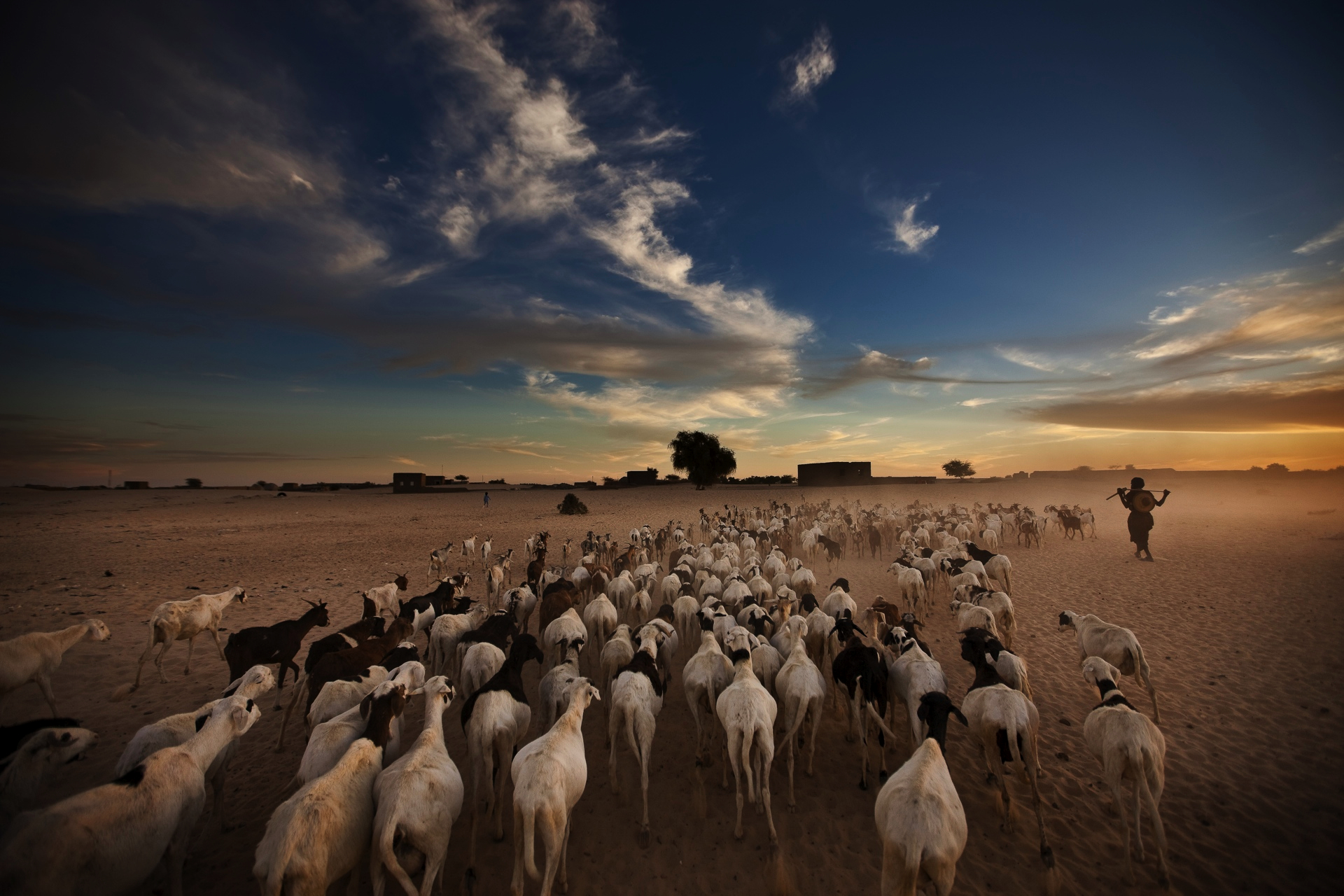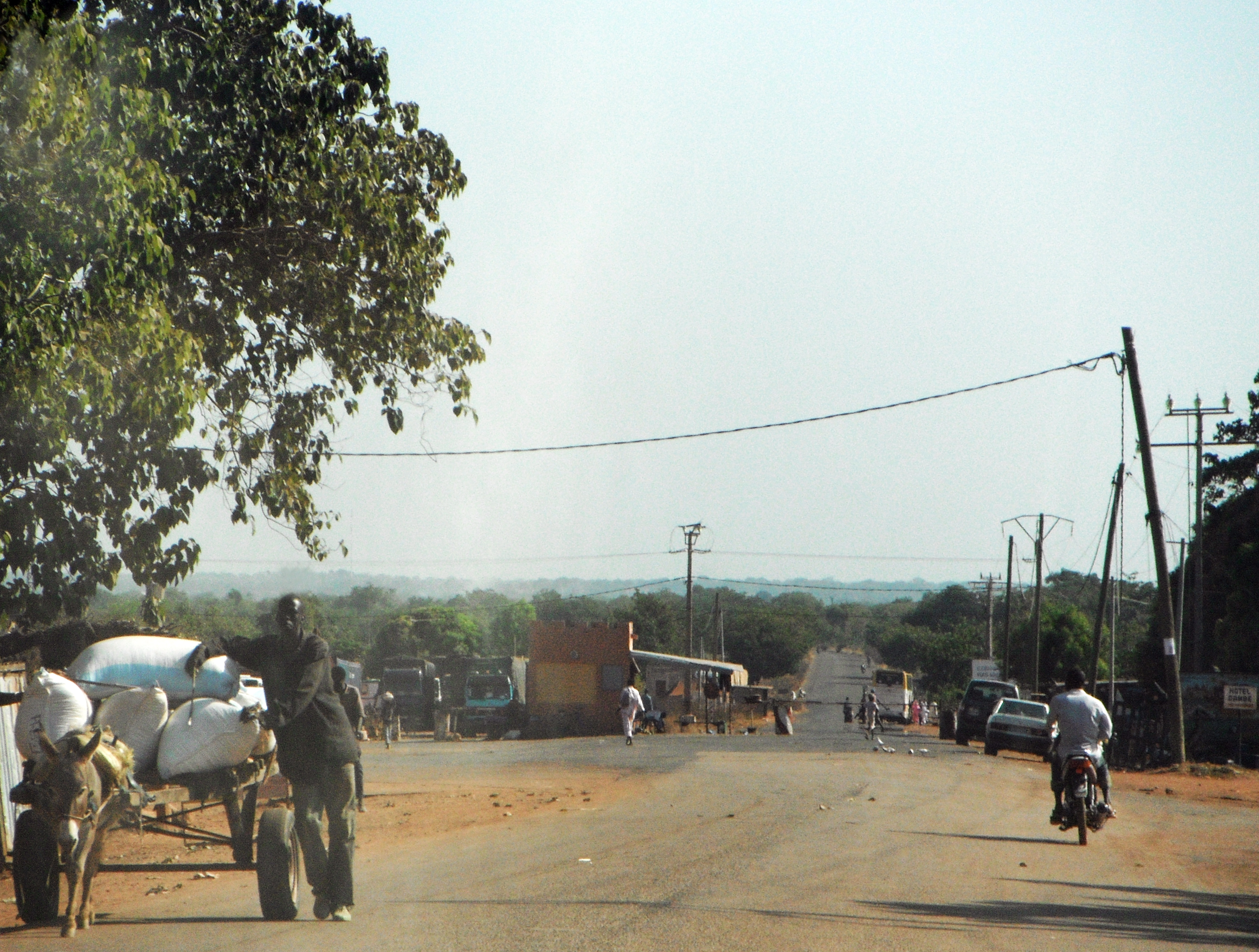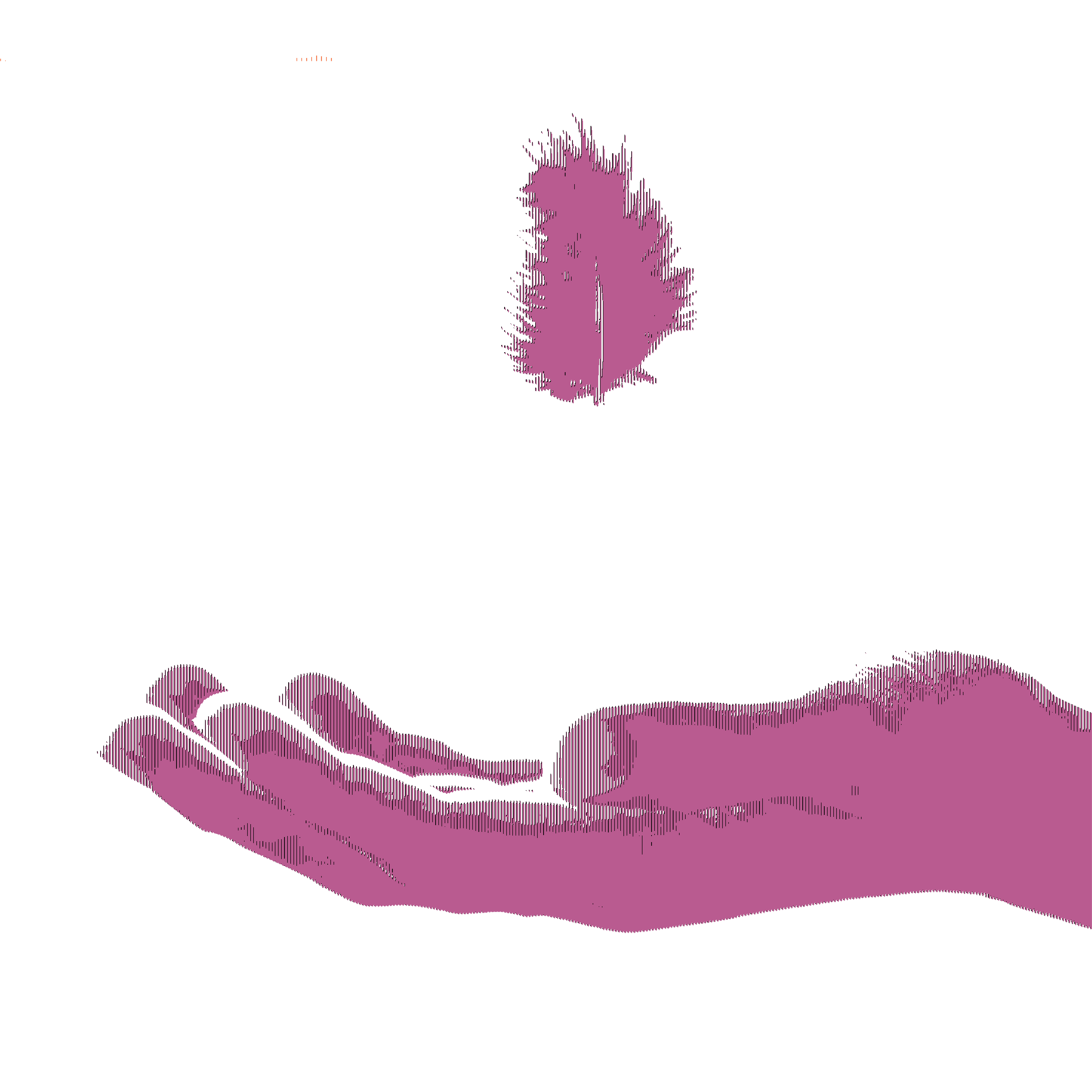
Late in the afternoon of April 20, 1828, "just as the sun was touching the horizon," as he later described it, a young Frenchman, barely 29, walked into Timbuktu disguised as an Arab, wearing long robes and a turban. René Caillié had begun his journey two years earlier in Senegal, and when the elation of arrival wore off, he looked around him at the streets of Timbuktu, a historic town he knew for its "grandeur and wealth." The city had been part of the Mali Empire, which was known for its trade in gold, salt, and spices, much of which passed through Timbuktu on its way north across the Sahara. Malian emperors built grand mosques in the city, and the Arab traveler Ibn Battuta visited in 1353, confirming Timbuktu's importance to Mali and trans-Saharan trade. But Caillié was disappointed. "The sight before me did not answer my expectations," he wrote in his memoirs. "The city presented, at first view, nothing but a mass of ill-looking houses, built of earth. Nothing was to be seen in all directions but immense plains of quicksand of a yellowish white colour … all nature wore a dreary aspect."
Caillié had expected to sail to the city on a large wooden canoe, part of a flotilla he'd been traveling with for weeks down the Niger River. But he found that getting to Timbuktu was not like entering Paris on the River Seine: once docked, he had to walk eight miles into the city from the riverbank. Caillié, without formal education or military training, was the second European to see Timbuktu, and the first to make it out alive. The British officer Maj. Alexander Gordon Laing had been there two years earlier, having crossed the Sahara from the north, but was murdered in the desert as he started his return journey home.
And so, with Caillié's damning words, began Timbuktu's long decline in the eyes of the Western world. For much of its long history, however, Timbuktu is a city whose value seemed to exist in stories of its former glory -- a glory that Muslim militant groups who now control northern Mali are trying to wipe out stone by stone. Once merely a seasonal camp for Tuareg herdsmen, Timbuktu evolved into a wealthy regional trading post. But it gained renown when Malian emperor Mansa Musa visited on his way back from Mecca in 1324, and inspired by his hajj ordered the construction of the Djinguereber Mosque for the study of Islam. The city's reputation for the study of Muslim theology soon spread into Europe and the Muslim countries of Asia. Timbuktu became the cultural center of the Mali and Songhai Empires, both of which were gone by the end of the 16th century.
Timbuktu, however, remained. The city survived the occupation of the Moor army that defeated the Songhai Empire, and the years of chaos that engulfed West Africa until the French conquered the region at the end of the 19th century. The French recognized the historic value of Timbuktu and established a military garrison there to protect the city and patrol the northern regions of the Niger River. But France's dream of enriching itself and its West African colonies off the mineral and agricultural wealth of the region never paid off. By the 1960s, just as modern Mali was getting its start as an independent country, Timbuktu had dwindled, as the British historian Basil Davidson wrote in his book Africa in History, to something "remote and humble."
Growing up in Colorado, I had little awareness of Africa, but like many American kids I'd heard of Timbuktu because of its odd place in our lexicon. Timbuktu was that far removed place we never quite understood but somehow admired, that little town where we'd stopped once for gas in Utah on some family trip, or that road through the western Colorado sagebrush where my high school track team's bus broke down. "Here we are," someone would say, "stuck in Timbuktu." I loved the very sound of the word, Timbuktu, the way its syllables bounce expectantly off the tongue. And I desperately wanted to go there.
I finally got my wish in July 1986, while on vacation from my work as a Peace Corps English teacher in neighboring Niger. I took a bush taxi into the city of Timbuktu, a barely functioning Peugeot 504 station wagon over the worst road I have ever traveled. Pulverized dust billowed like soapsuds, hiding deep ruts that pinched and punctured three of the four tires. The 30-mile journey from where I'd picked up the taxi on the main north-south road became a two-day ordeal. When we drove into Timbuktu in late afternoon, I was exhausted and, I admit, disappointed. Low brown mud buildings defined the architecture, giving it a temporary feeling. Sand drifted along the foundations of buildings, which oddly reassured me. I'd definitely arrived at the Sahara. What surprised me most was when I drank water from a well in the city, not from a faucet, and it tasted clear and cool right from the desert itself.
Timbuktu's only hotel at that time was full, so I spent two nights on a mat on the concrete patio of a local bar, a bordello really, and then I fled back the way I'd come. The heat was awful and, as Caillié wrote in his memoirs, there was no way to escape it day or night. I slept little and discarded my mosquito net at night for fear it would block the slightest breeze. I had enough energy to check out Caillié's living quarters, marked by a bronze plaque. In the end, though, I could not agree with his descriptions of Timbuktu. "Everything," he wrote, "had a dull appearance."
I found the city and desert beyond to be one of the most beautiful and haunting landscapes I've ever seen. At night, the desert sky was so bright and clear it seemed to rest right on the rooftops. During the day, the city and landscape blended into the blinding pale sky as if Timbuktu itself were floating on a cloud. I loved how the wind continuously rubbed the tops of dunes, blurring them into the horizon and forming ridges that looked as if they'd been pressed by a giant thumb and forefinger. This is part of the reason why I keep going back to the Sahel and the southern Sahara -- because the land is so big and so extreme. The other reason, and perhaps it's not all that surprising, is that the people who live there are so resilient.
Here is what I mean: In 1991, when it looked like the country was doomed to suffocate under military dictatorship and places like Timbuktu would fade away entirely, Mali cast off the military and ushered in an era of change. Mali's democracy, corrupt though it was, sped up the country's development -- building roads, schools, hospitals, hotels; organizing its national archives; and retooling the infrastructure of the capital, Bamako.
In 1988, the U.N. cultural organization UNESCO named three mosques and 16 mausoleums in Timbuktu to its World Heritage list, making the city the rock of Mali's tourist industry. Universities, international organizations, and philanthropists began pumping in millions of dollars to protect and catalog the artifacts and libraries of Timbuktu, including tombs of Muslim saints and warriors dating to the 15th century. There are, according to UNESCO, some 60 privately held libraries in Timbuktu and more than 700,000 ancient manuscripts, most of them connected to the Muslim heritage of much of West and North Africa, as well as southern Europe. During the last 21 years, according to Cherif Keita, professor of African culture and literature at Carleton College in the United States, "Timbuktu has been undergoing something of a renaissance, really."
All of this, we now know, is being swept away by the Islamist rebel groups who have hijacked the Tuareg rebellion in northern Mali and taken its most important population centers, including Timbuktu, in a bid to impose sharia law on all of Mali. In the last few weeks, fighters from the group Ansar Dine, which is Arabic for "Defenders of the Faith," have begun methodically destroying ancient tombs and mosques in Timbuktu, which is said to have been the home at one time or another of 333 Muslim saints. Using rifle butts, picks, and shovels, they bashed in the entrance to the Sidi Yahia mosque, named for one of the first imams of Timbuktu. The long-sealed doorway, legend claimed, would not be opened until the last day of the world. In Gao, the city north of Timbuktu that was former capital of the Songhai Empire, they have reportedly damaged the Tomb of Askia Muhammad, the most powerful of the Songhai emperors and a devout Muslim.
But the Taliban may have set the precedent for such attacks when they destroyed the Bamiyan Buddhas, two mammoth 6th century statues carved from a sandstone cliff in Afghanistan. Despite pleas from the international community, Taliban soldiers dynamited them in 2001. Over the ensuing decade, attacks on Muslim holy sites by Islamic militants have ensued with sad regularity in Iraq and even recently in Libya, where militants have taken advantage of the chaos following the fall of the regime of Muammar al-Qaddafi. In Mali, the destruction in Timbuktu marks a conflict within Islam itself. Hard-line Salafi Muslims, who make up groups like Ansar Dine and al Qaeda in the Islamic Maghreb, condemn the existence of icons they say worshipers may hold above god, while the local Sufi practice of Islam tolerates icons and the playing of music, though not as objects of worship.
But Timbuktu has become so much more than its ancient history. The Timbuktu region is also the childhood home of the celebrated guitarist and singer, the late Ali Farka Toure, who grew up in a village near the city. He started a tradition of mixing African and western musical styles that other musicians in the region have followed. Timbuktu itself has also become a center for West African music, drawing thousands in the cool month of January to the semi-annual Festival in the Desert concert, which this year drew the singer Bono as its star event. The Tuareg rebellion that launched northern Mali's present troubles started only weeks later and no plans have been announced for a future festival. It a shame, as Mali seemed to be making real progress. The government had already paved most of the major north-south highway to Gao and was working on the road into Timbuktu, as well as a canal to bring the Niger River to the city's doorstep (which would have certainly pleased Caillié).
But the music and the construction has fallen silent now, replaced by the sharp blows of axes and the spitting of gunfire. And yet, across the spread of 1,000 years of history, this is nothing new in Timbuktu, which has been occupied and sacked by numerous armies, from the Tuaregs to the Songhai to the Arabs, from the Moors to the French. The last serious occupation, one that did real physical damage to the city according to Keita, was when the Moors invaded and toppled the Songhai Empire in 1591. But no one and no force of nature, not even the Sahara -- whose sands creep up the foundations of the city's homes -- has been able to wipe Timbuktu off the map. Somehow the city has survived, losing bits of its heritage here and there, but keeping most of it intact. And Keita, who descends from people who fled Timbuktu during the Moorish invasion, said that invaders over the centuries added their own touch to the fabled city. "You can still find Moorish style windows in buildings throughout the town," he said. "Timbuktu has always had a genius for being able to absorb its invaders."
But the methodical aggression of groups like Ansar Dine don't bring with them architecture or history of their own. And there's much more than earthen tombs and mosques at risk. "The spirit of Islam goes back to the tenth century in this region," explains Keita. "They are killing the soul of Islam."




